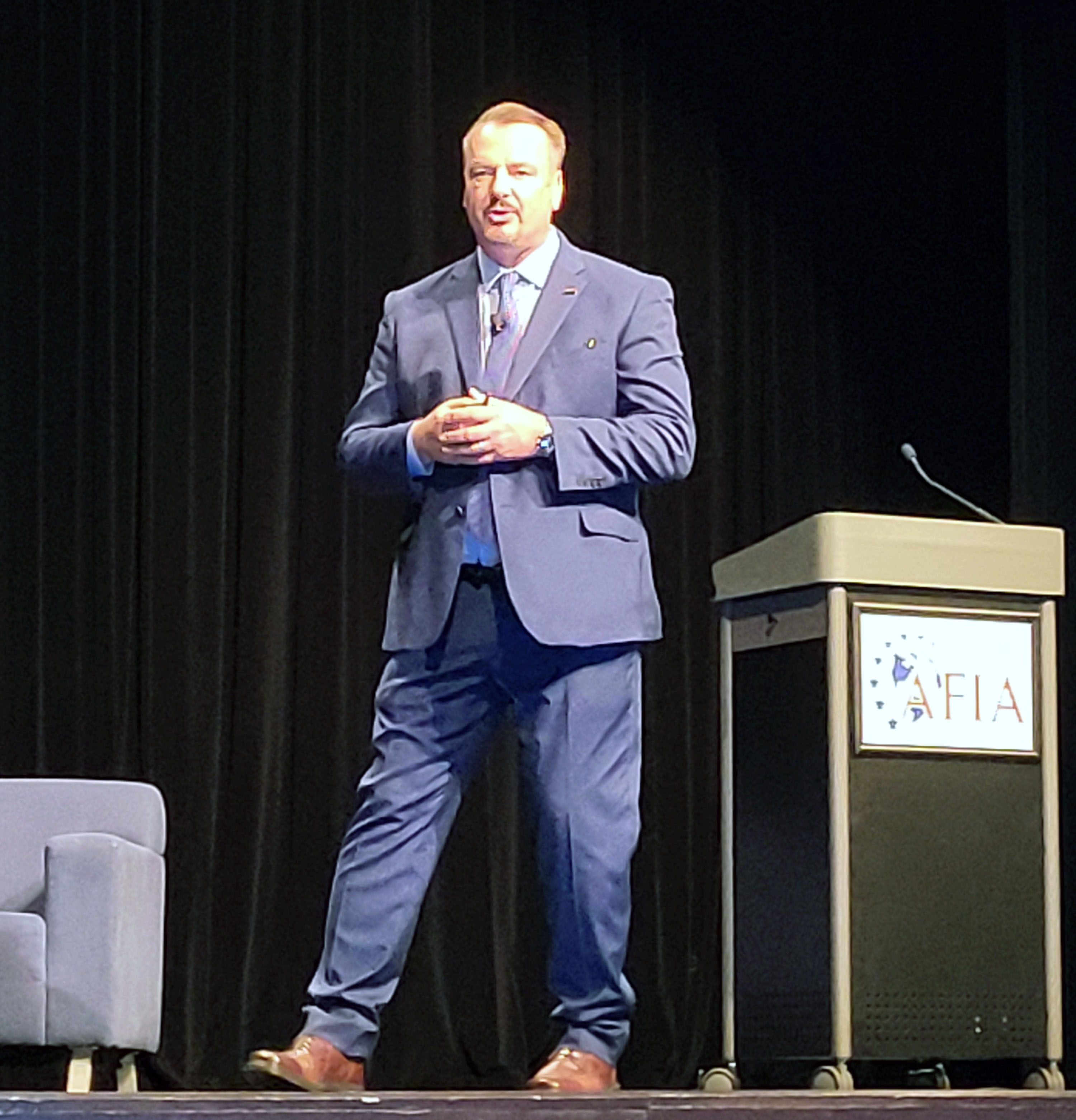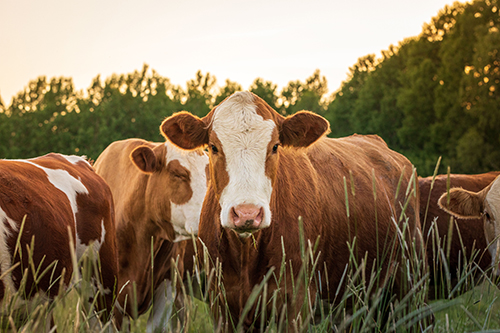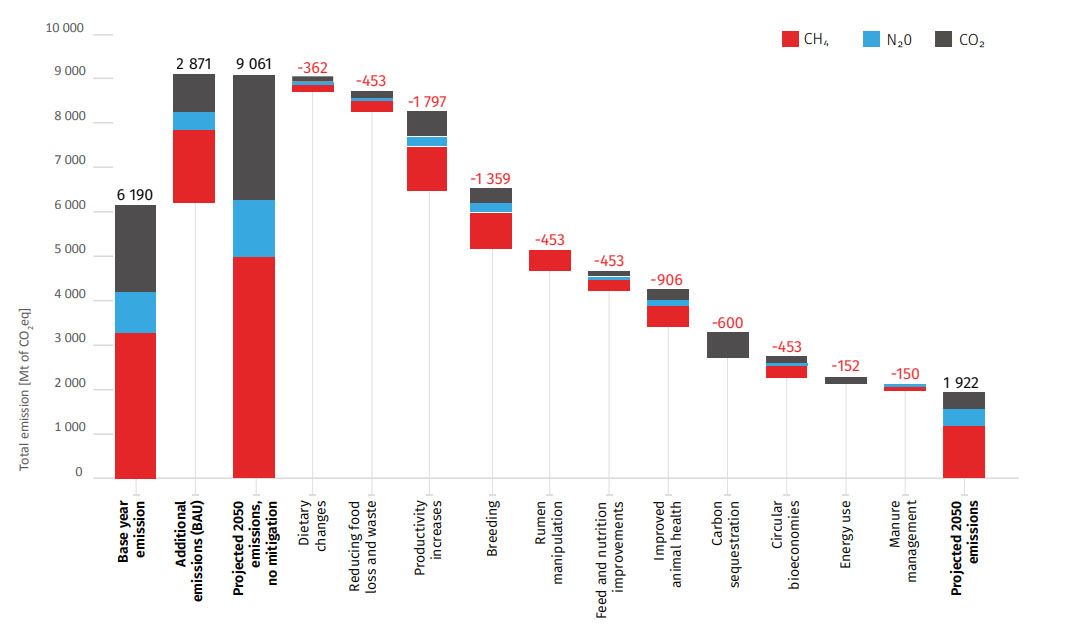ATLANTA — Sustainability and climate change have long been trending in the minds of consumers. This deep concern for the environment has led manufacturers to try to enhance their environmental efforts, all hoping to reduce their impact.
For the pet food and treat industry, environmental concerns have caused increased interest in more widespread usage of eco-friendly packaging, the development of alternative protein ingredients, and the advancement of more sustainable facility operations.

Frank Mitloehner, professor and air quality specialist at UC Davis and Department of Animal Science Director at the CLEAR Center.
| Source: Sosland Publishing Co. / Nicole KerwinThough these efforts are great, understanding the industry’s true environmental impact is imperative, especially as consumers draw — and enforce — their own conclusions. Frank Mitloehner, professor and air quality specialist at UC Davis and Department of Animal Science Director at the CLEAR Center, discussed this topic during the American Feed Industry Association’s 2024 Pet Food Conference on Jan. 30.
Real impacts
According to the peer-reviewed article “Environmental impacts of food consumption by dogs and cats” by Gregory S. Okin that appeared in PLOS One, 163 million dogs and cats in the United States are responsible for 25% to 30% of the environmental impact of meat consumption. Additionally, these pets create about 64 million tons of carbon dioxide (CO2) annually from consuming meat.
These statistics have remained a top concern for today’s pet parents, with many demonizing the meat processing and the agriculture industries for their significantly detrimental impacts on the environment.
Many meat alternative companies have cropped up to provide more eco-friendly protein sources for use in animal nutrition and pet food, but such products are not a complete solution to sustainability, as demonstrated during Mitloehner’s Pet Food Conference presentation.
According to Mitloehner, US animal agriculture emissions represent just a tiny fraction of global greenhouse gas (GHG) emissions. In 2017, these emissions totaled 49 billion tonnes, representing just 0.5% of global GHGs, whereas US plant agriculture emissions represented 0.6%, US fossil fuel combustion emissions represented 11%, and all other US and global GHG emissions accounted for 88%, according to the US Environmental Protection Agency (EPA) Greenhouse Gas Emissions Inventory.
Additionally, in 2022, when US GHG emissions hovered around 5.98 billion tonnes, the agriculture industry accounted for 11% of these emissions, whereas other industries like transportation and electric power accounted for much larger portions of GHG emissions, according to the US EPA 2022 Inventory of US Greenhouse Gas Emissions and Sinks.
 Source: ©JONATAN RUNDBLAD - STOCK.ADOBE.COM
Source: ©JONATAN RUNDBLAD - STOCK.ADOBE.COMThe main greenhouse gases that have the potential for global warming are carbon dioxide, methane and nitrous oxide. Cattle have been deemed significant emitters of CO2 by consumers, when the reality demonstrates that these livestock help with carbon sequestration. Through this process, carbon in plants and air is consumed by a cow and later released as waste, which then eventually cycles through soil and back to plants. Carbon is also produced as a result of agricultural production, from which the industry sources meat and milk.
Looking at methane emissions, the agriculture industry is estimated to account for about 188 million tons annually of the global 558 million tons, according to the Global Carbon Project. However, total sinks that naturally absorb methane from the atmosphere are estimated to be around 548 million tons, meaning only around 10 million tons of methane could be left annually.
Though this amount of methane is smaller than what is commonly believed, methane still contributes to global warming and leaves a large environmental impact. According to Mitloehner, this doesn’t mean reducing the amount of or reliance on livestock, but that better management of cattle’s methane emissions could actually be a part of a climate solution.
A multi-faceted solution
As the global population continues to rise, more and more developing countries are entering the sphere. These countries carry much larger population growth rates and rely on large numbers of livestock to feed their populations.
The problem with livestock in developing countries is that production isn’t as efficient as that in more industrialized countries. According to the Food and Agriculture Organization of the United Nations (FAO), GHG emissions from milk production in various developing regions, including Central and South America, West Asia and Northern Africa, Sub Saharan Africa, and South Asia, are significantly larger than those from North America, Western and Eastern Europe, Russia, East Asia, and Oceania regions.
Improving livestock production may help solve this problem. As demonstrated by Mitloehner, when milk production from a cow increases, the GHG emissions tend to decrease.
Instead of trying to limit developing countries’ livestock populations, several interventions can be done to help ensure these livestock produce meat and milk more efficiently. According to Mitloehner, things like improving animal fertility, health and genetics can all help decrease the number of animals required for agriculture production. Developing more energy-dense feed can also help by decreasing methane emissions per animal.
According to the FAO, projected emissions from the agriculture industry for 2050 are estimated to be around 9.06 million tonnes of CO2 equivalent, but increasing livestock productivity could help reduce these projected emissions by 20% by 2050.
 Source: The Food and Agriculture Organization of the United Nations, “Pathways towards lower emissions”
Source: The Food and Agriculture Organization of the United Nations, “Pathways towards lower emissions”
Though meat-less Mondays and vegan diets for humans, as well as for pets, have gained popularity with consumers as ways to help combat climate change, this change in diet isn’t the best solution. According to research shared by Mitloehner, humans that change their diet from omnivore to vegan are estimated to save about 0.8 tons of CO2e annually, and those that commit to meat-less Mondays are estimated to reduce 0.3% of GHG emissions. For reference, one trans-Atlantic flight per person contributes 1.6 tons of CO2e.
Instead of looking at protein consumption, more attention should be focused on the food wasted. In addition to focusing efforts on improving livestock production, Mitloehner also urged that climate efforts focus on food waste. An estimated 40% of food in the United States is wasted, and globally one out of every three calories are wasted by humans, according to Mitloehner.
Some in the pet food industry have already seen the potential in food waste, leveraging upcycled ingredients in their formulas and thereby reducing some food waste that contributes to emissions. But upcycling ingredients alone is just one small part of reducing emissions. Supporting the agricultural industry as it strives to shift toward more efficient production will be key for the pet food industry as it seeks to reduce its environmental impact throughout the supply chain.
Read more coverage from the 2024 Pet Food Conference.





